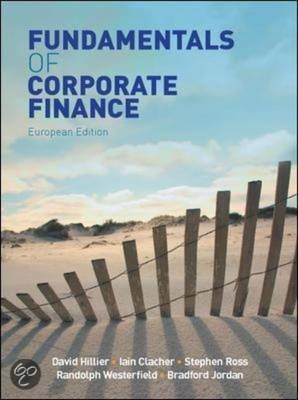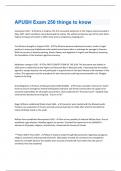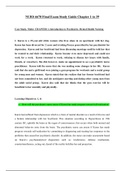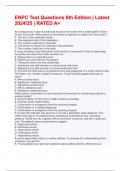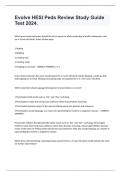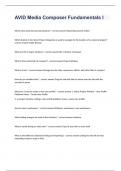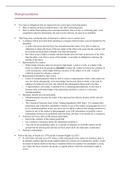Corporate Finance = making decisions regarding WHAT assets to buy / sell and WHEN to buy
/ sell those assets.
The goal of financial management is to maximize the market value, this is done through
enhancing the wealth of stockholders (owners, shareholders) so Shareholders’ Equity (=
total assets – total liabilities)
Financial Statements
Financial Management = keep track of the cash that comes in and goes out of the
business.
Balance Sheet = snapshots of the company at a single point in time.
Income Statement = profitability of the company for a specific period
Financial Management Decisions
Capital budgeting the process of planning and managing a firm’s long-term investments.
,Capital structure the mixture of long-term debt (borrowing) and equity (owners’
investment) maintained by a firm. (Where do I find my long term financing to invest in total
assets?)
Working Capital Management The management of a firm’s short-term assets and
liabilities. (Short time day by day decisions)
Basic legal forms of organizing firms
Sole Trader (company with single owner, if owner dies the company dies)
Partnership (two or more persons who combine their resources to form a business
and share risks, profits and losses)
, Corporation – Unlimited life, easy transfer of ownership (does not belong to a name
but to a paper), limited liability (aansprakelijkheid, verantwoordelijkheid) owners
can lose anything they invest in the company and nothing more (Increased access to
funding: Capital Markets!)
Agency relationship: contract between shareholders & managers (separation of
control and management) However, conflicts of interest may arise because the goal
of shareholders which is to maximize shareholder’s wealth does not align with
managers. Agency Problems!!! Corporate Governance can provide a solution to
agency problems but this brings more costs.
Cash Flows
Calculation of Cash Flows from Operating Activities
, EBIT = Earnings Before Interest and Taxes = Sales – Costs (inclusive depreciation &
amortization)
DEPRECIATION Not real cash that the company paid!!!!!
So why is it included in the income statement as an expense? Because it reduces the pretax
income!
INTEREST EXPENSE Not an operating expense for industrial companies!!!!!
This is the claim of the creditors, we have to give back to the people who we borrowed from.
Operating Cash Flow ( OCF )=Net Income+ Depreciation+ Interest Expense−Change∈Net Working Capital
Or:
OCF=EBIT + Depreciation−Taxes−Change∈ Net WorkingCapital
With:
New Working Capital=Current Assets−Current Liabilities
∆ NWC=NWC ∈2015−NWC∈2014
If NWC is negative it indicates cash inflow
If NWC is positive it indicates cash outflow
Net Working Capital = Capital is another word for money and working capital is the
money available to fund a company's day-to-day operations – essentially, what
you have to work with. In financial speak, working capital is the difference between current
assets and current liabilities. Positive net working capital indicates that a company has
sufficient funds to meet its current financial obligations and invest in other activities.
Dividend, shareholders’ claim, is paid from net income. The rest of net income goes to
Retained Earnings. So Creditors have a priority to Shareholders. Dividend does not reduce
the pretax income! This is why the goal is to maximize shareholders wealth because they
take the highest risks.

